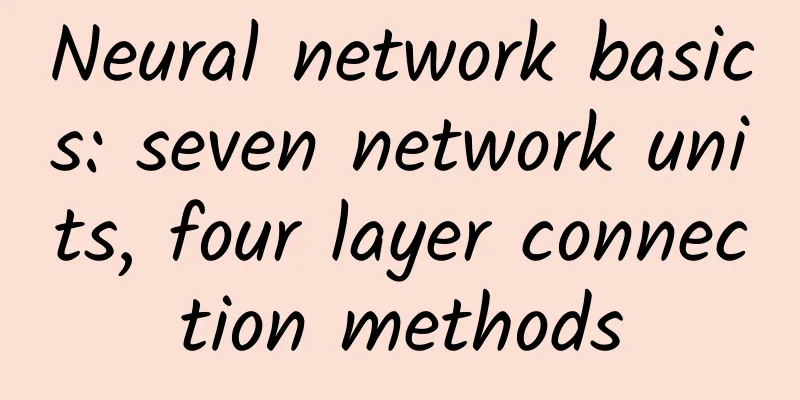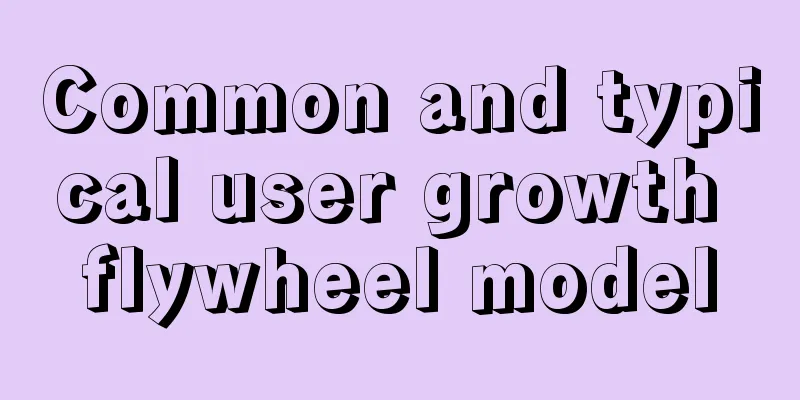AI is taking programmers' jobs: AI may replace programmers in 2040

|
Some experts at Oak Ridge National Laboratory in the United States predict that AI technology will be powerful enough to replace programmers by 2040. However, even if machines can completely replace the work done by programmers today, it does not mean that they will not need human help. Programmers and other types of IT jobs are undoubtedly the hottest jobs right now. However, this trend may not last forever. Some experts at the Oak Ridge National Laboratory in the United States predict that by 2040, AI technology will be powerful enough to replace programmers, and AI will write software better and faster than human programmers. In other words, software will write software better than humans. How does this happen? Can AI actually learn how to do intellectual work that requires a high degree of creativity? After all, creativity has long been considered uniquely human. Can AI learn more than we teach it? Using artificial neural networks to develop writing rules Artificial neural network is a technology that tries to imitate the learning mechanism of the human brain. It is inspired by real neural networks and partially simulates real neural networks. We can try to imagine the human nervous system as a very powerful computer. In the picture above, each neuron has an input and output, and the input is actually a weighted combination of a series of signals. Each signal has its own mathematically expressible influence, and the sum of the signals determines the output. What is special about human neural networks is that they are able to adapt and change based on learning and experience, which means that the same input does not always produce the same output. This is done by changing the priorities of different impulses and modifying the physical connections between neurons. These changes are specified through learning algorithms and cost functions to improve the human ability to adapt to new environments and optimize future behavior. Scientists and engineers who study artificial neural networks try to replicate this mechanism and implement it in software development. Specifically, this means that the software is not written in a traditional way, such as a series of "if... then" rules. In theory, we can imagine that through a process of gradual learning and optimization, artificial neural networks can learn how to formulate (or "write") rules to get better output than humans can write. In AI science, this is called deep learning, and it usually relies on human feedback to some extent. Here are a few apps that can replace a programmer. Karpathy: Automatically generating code using recurrent neural networks Back in 2015, Andrej Karpathy, then a PhD student in computer science at Stanford University, used recurrent neural networks to generate code. He took a Linux repository (all source files and header files), merged it into a huge archive (over 400 MB of code), and used that code to train an RNN. He left the system running overnight. The next morning, he got this: AI-generated code samples Literally, the AI-generated code contains functions and function decorations. It has parameters, variables, loops, and the correct form of indentation. There are opening and closing brackets, and even comments. The AI certainly made some mistakes in the code. Sometimes variables were never used. Other times, some variables were not defined earlier. But Karpathy was happy with the result. "The code overall looks pretty awesome. Granted, I don't think it compiles, but when you browse the generated code it feels an awful lot like a giant C code base," Karpathy wrote on his blog. The project is available on GitHub. It uses the Torch7 deep learning library. Here is the entire output file that Karpathy obtained: https://github.com/karpathy/char-rnn DeepCoder Researchers at Microsoft and the University of Cambridge have developed a machine learning system called DeepCoder that can write code and has the ability to learn. DeepCoder can search through a huge code base and then write effective code. The technology used by DeepCoder is called program synthesis, which is to compose new programs by intercepting lines of code from existing software. It has to be admitted that many programmers nowadays do the same. By learning the input and output data of a series of code fragments, DeepCoder can automatically extract code fragments that are useful for the target task. DeepCoder can write a program that works in less than one second. As DeepCoder's programming experience increases, its ability to distinguish useful and useless code fragments increases, and its speed of generating programs will become faster and faster. This doesn’t mean the AI is stealing code, or copying and pasting it from existing software, or searching the internet for solutions. DeepCoder’s authors expect it to participate in programming competitions in the near future. Domain Specific Language (DSL) example programs created by DeepCoder "The program will eventually allow non-programmers to describe their program ideas to the computer and the system will write them automatically," said Marc Brockschmidt, one of DeepCoder's creators, who worked on the Microsoft research project at the University of Cambridge. You can find the documentation for DeepCoder here: https://openreview.net/pdf?id=ByldLrqlx AI Writing Python Code A French engineer going by the handle BenjaminTD published a blog post explaining how he “taught an AI system how to write Python code in Python.” He used a long short-term memory network (LSTM), which is one of the most popular recurrent neural network structures. He used a lot of Python code (using libraries such as Pandas, Numpy, Scipy, Django, Scikit-Learn, PyBrain, Lasagne, Rasterio, etc.) to "feed" this network. The combined file size is 27MB. Then, AI generates its own code. Here is the definition initialization: ...using a Boolean expression: ...and create the array: If you look closely at the array, you'll notice a syntax error. BenjaminTD's code is far from perfect, but he thinks it looks good for a network that has only learned from reading example code. AI Programmer In 2017, researchers from Bloomberg and Intel Labs claimed to have achieved the first AI system "AI Programmer" that can automatically generate complete software programs. AI Programmer uses genetic algorithms in machine learning to simulate complex instructions. Although the complexity of the programs generated by AI Programmer is comparable to that of human novice programmers, researchers believe that the programs written by AI Programmer can completely transcend traditional categories and are not limited by human time and wisdom. The software architecture of AI Programmer. As can be seen from the figure, very little is driven by humans. You only need to enter instructions at the beginning and receive a function suitable for a certain task at the end. The rest is done by the machine. The researchers said they were able to generate many software programs using AI Programmer. The following table lists the generated programs. Potential threats: Uncertainty about what machines can do There are already programs that can replace humans, but the question that arises is, if machines can learn on their own, how much can they learn? Where is the limit? Can this optimization process really teach software to write code better than a person? Will web development agencies and software companies use AI-driven programs to write code for themselves to save money? The fact is, we are not sure yet to what extent machines can do. However, we know that AI is already affecting some jobs in the IT industry. Wipro Ltd., an Indian software consulting and outsourcing company, has been using AI platform Holmes to maintain its software since June last year, and its more than 3,000 engineers are worried about their jobs as a result. Not to mention, many technologies we use regularly use machine learning technology - from speech recognition to machine translation. AI and human programmers will play complementary roles in programming One problem with artificial neural networks is that the algorithms they use are "black boxes," meaning that their internal workings are too complex. Tesla's AI director Andrej Karpathy believes that for most application areas, we will never get a 100% accurate model that is fully AI-driven. He believes that AI systems will be more than 90% accurate, but they are not perfect and they occasionally fail in unexpected ways. In general, supervised and human-controlled deep learning systems perform better than unsupervised systems. This means that even the most complex AI software requires human involvement and feedback to learn and adapt to new environments. This fact provides a solution to the tension between artificial intelligence and human programmers in the future - working together. We can be sure that in the near future, AI and human programmers will play complementary roles in programming. AI's job may be to handle repetitive, time-consuming tasks that require the superior precision of a machine. Machines can avoid syntax errors or design errors that are due to human factors. For example, one way AI can help is through auto-completion functions, where programmers only write a small part of the code, and then AI recognizes the programmer's intention and completes the rest of the code, saving humans a lot of work. Even if machines are able to completely replace the work done by programmers today, it does not mean that they will not need human help. But programmers must shift their focus from writing programs to monitoring the performance of AI and "feeding" data to AI. As Karpathy points out, programmers may become a kind of data enabler - collecting, organizing and analyzing data, and then using them as input to AI, and then letting AI do the rest. |
<<: Avoid detours: advice for Java programmers with 1 to 5 years of experience
>>: What is it like to develop Android projects with Kotlin?
Recommend
Tik Tok trending searches challenge Weibo's "advertising board"
Tik Tok’s trending searches are becoming more and...
The roses you buy are fake, and the scent of roses you smell is also fake!
Everyone should have used something with a rose s...
How to play and case analysis of limited-time flash sales in the community
Limited-time flash sales are a marketing applicat...
Ministry of Industry and Information Technology: 107 apps that refused to rectify have been removed from shelves this year, and rectification efforts will be intensified
[[394514]] On April 20, the State Council Informa...
2017 Latest APP Listing Guide for Each App Store
The current domestic traffic is becoming increasi...
National down jacket warning! Wear thicker clothes
From November 19 to 22, a new wave of cold air wi...
Frequently asked questions and answers about user growth!
This article is just a beginning, sorting out 5 v...
How to achieve refined operations at different stages of the product?
The job of operations is to "help products d...
Double 11 sales guide! It’s easy to acquire users by advertising like this!
Double Eleven is coming soon! For advertisers, Do...
High-quality case studies on information flow delivery in the automotive industry
It’s the end of the year and it’s the crazy car b...
The new version of the diagnosis and treatment plan has changed? What does it mean that the Ct value has dropped from 40 to 35?
Mixed Knowledge Specially designed to cure confus...
What are the impressions, clicks, click-through rates, and rankings that appear in traffic and keyword tools?
With the arrival of 2018, I have been working in ...
Case Analysis | A Complete Analysis of Xueersi Online School’s User Growth System
Xueersi Online School is an online education bran...
To know your fortune in the Year of the Dragon, do a dinosaur fortune-telling!
China is the country with the most dragons - we a...
Sony MDR-1000X pushes BOSE off the altar to create the most powerful Bluetooth noise reduction
When it comes to noise-canceling headphones, many...









